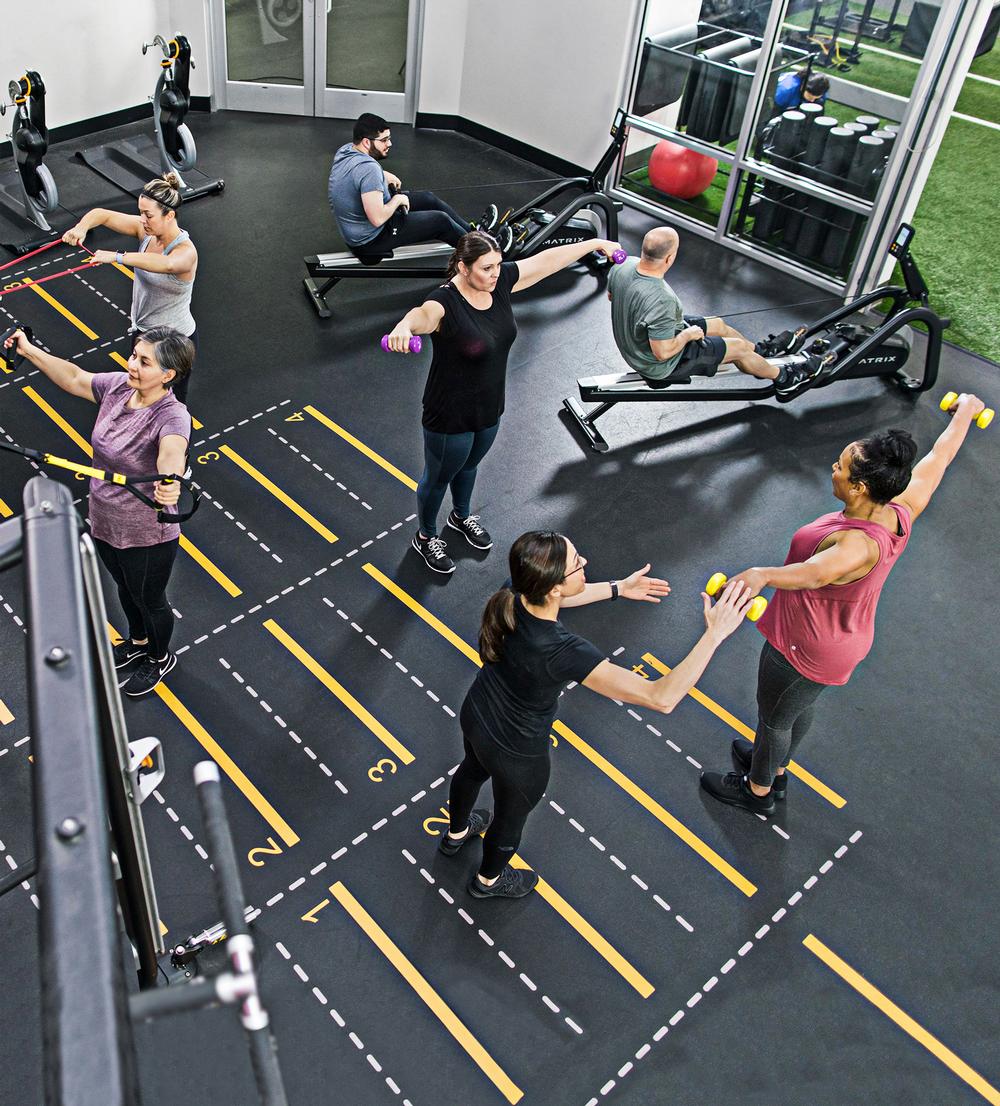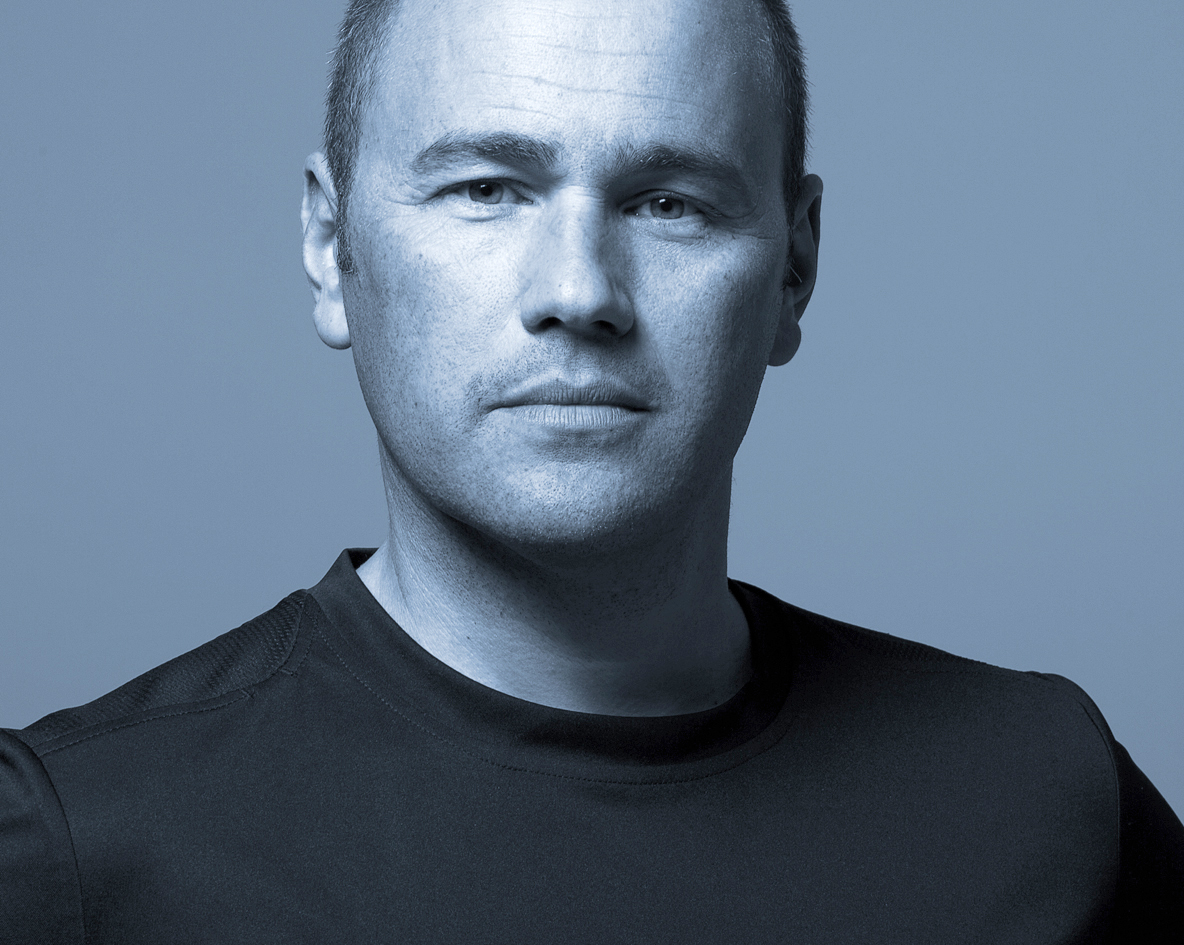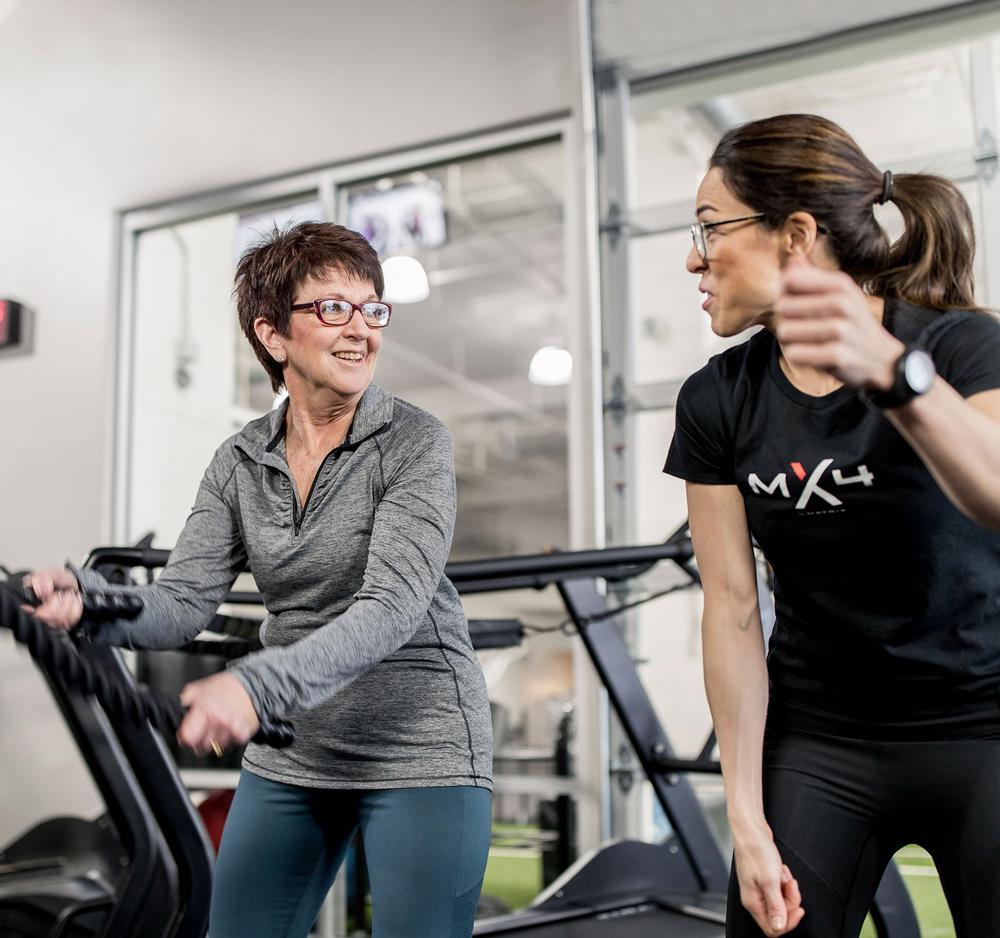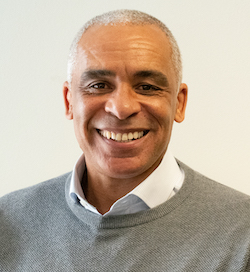What is MX4 Active?
MX4 Active is an expansion of our range of small group training solutions, targeting the ageing population and the deconditioned. Both MX4 and MX4 Active have similar features, such as periodisation, the equipment used and weekly structures, but the key differences are the coaching style and portfolio of exercises used.
We developed MX4 Active after many consultations on how to effectively connect those with a lower baseline of fitness. Special considerations were made to ensure the programme can serve the needs of older individuals who may have additional age-related conditions and physical limitations. The workouts blend cardio-based modalities with functional training to support fitness improvements.
The programming aims to ease the transition to an active lifestyle by including movements that are low impact yet develop coordination, balance, flexibility and skeletal and muscular strength. Each session lasts 45 minutes and participants are encouraged to train 2-3 times per week.
Why design training specifically for the older population?
The ageing population in the UK is rapidly increasing. The Office of National Statistics states that almost a fifth of the UK is now aged 65 and over. This group is also largely inactive, and we're paying a price for this. ukactive recently estimated that inactivity in this age group costs the NHS around £11bn per decade.
The fitness industry needs to do what we can to turn this around. Everyone may be talking about active ageing now, but we have spent nearly two years developing this programme. We went back to the source, spoke with the people in these groups, discussing the physical and psychological barriers they face to activity, working with experts to find the most adaptable, versatile exercises, performing research and beta testing scenarios in the US, to find a solution that would make an impact.
What were your findings in the research stages?
We already understood the physiological changes we needed to make to the programming in terms of adapting our exercises and intensities, but what was really interesting was the steering our participants gave us regarding trainer attitude.
Trainers need to be empathetic and reassuring in their delivery. Calm, clear and unrushed instructions paired with physical demonstrations. They need to relate, to understand that these people may be older, perhaps retired, but have been at the top of their games before now and deserve respect, not belittling.
When teaching MX4 Active, you can't be the same trainer you are when you’re training a 20-year-old. It’s not uncommon that most trainers have one mode of operation. We had to dig deep into this concept, working with instructors to recognise that their attitude and delivery is key to the success of this programme.
We have selected Matrix Master Trainers to be trained as Active Trainers so they can deliver this method. But this comes down to the operators having a bit of a reality check – ask the question, are your trainers interacting and relating to the population as a whole, or are they skewed towards a certain demographic? This doesn’t mean you need to hire older trainers to instruct active ageing groups, you just need the right trainers who can relate to different abilities and ages authentically.
The type of physical activity encouraged is also important. For years, the focus has been on the relevance of cardiovascular fitness but, over the last decade, studies have documented the hugely positive impact that regular strength training can have on an array of health and wellbeing indicators including: mobility, strength, bone density, mental health and long-term metabolic conditions such as diabetes.
In fact, the NHS website now recommends at least two strength training sessions per week for those aged 65 and over. That’s why the programme also incorporates functional training and weight-bearing exercises to maintain and improve these wellbeing factors.
How does MX4 Active differ from your original MX4 small group training?
MX4 is about never doing the same thing twice, high intensity and variation. There are 156 workouts to choose from. MX4 Active is completely different. From our findings, the ageing population prefer familiarity to their workouts, not variety, so we carefully reduced our training plans to just 26 workouts. We also use periodisation differently, focusing on just two workout plans a month.
With this periodisation, members can 'learn it, then work it', with the familiarity building confidence. The idea is that members will acclimatise to the exercises and movement patterns in the first two weeks and then the trainer can increase the intensity of these for the rest of the month.
We also increased the recovery period, removed any exercises that involved pressure on the back, knees or repetitive floor work. Interestingly, we also had to weigh up the decision regarding music. Normally, in MX4 training this is hugely motivational, but our MX4 Active testing groups found it potentially distracting when trying to listen to the instructor and take guidance.
Many forms of small group training are about the quick, in-and-out model, but the older age group aren’t concerned by time constraints. They aren’t rushing in and out of classes. It became clear that there was a real social aspect at play, not just conversing amongst the members in the group, but the rapport they wanted to build with the instructor.
Overall, we have changed the environment, the experience and the stimulus to engage in the process.
How does a programme targeting the ageing population help the industry?
Getting an increased number of older or deconditioned people active represents a major avenue for growth. We have developed something that specifically engages this avenue.
It’s not necessarily that this age group isn’t already represented in the memberships of gyms, but it is true that they're not being catered for in a way that suits their exercise needs. Clubs are taking their membership fees, which in many cases simply equates to giving the member a key to the door of the gym but nothing beyond that. By providing solutions specifically designed for this age group, facilities have the opportunity to stand out from their competition. This is a group that, if satisfied, will build an incredible boost in loyalty and promote through word of mouth.
We need to encourage this age group to trade an inactive lifestyle for an active one. Maintaining health and functionality for as long as possible will have a profound effect on an individual’s quality of life and will also save the health service literally millions of pounds, delivering widespread benefits to the nation as a whole.
MX4 Active is an ideal addition to facility timetables, helping older and less fit members form a habit of exercise. Old age does not have to mean ill health and a lack of mobility. Keeping physically active and performing regular cardiovascular and resistance training is scientifically proven to positively impact mental and physical health in older adults.
MX4 Active is now available across the UK. To find out more about MX4 Active visit www.matrixfitness.co.uk



























































